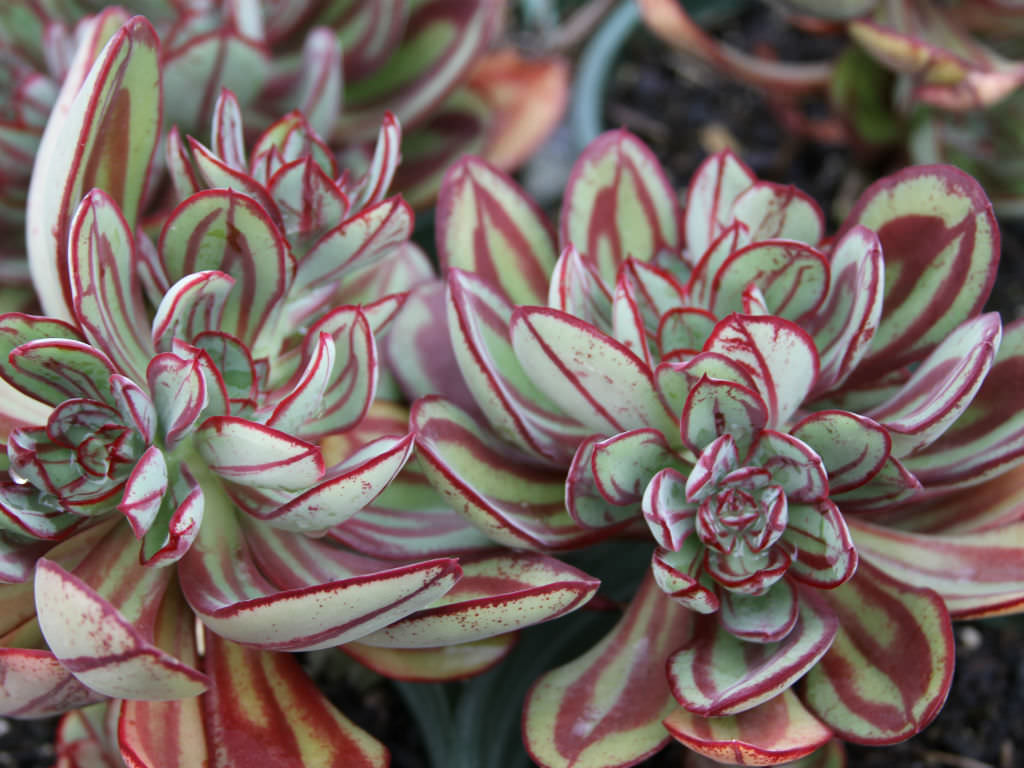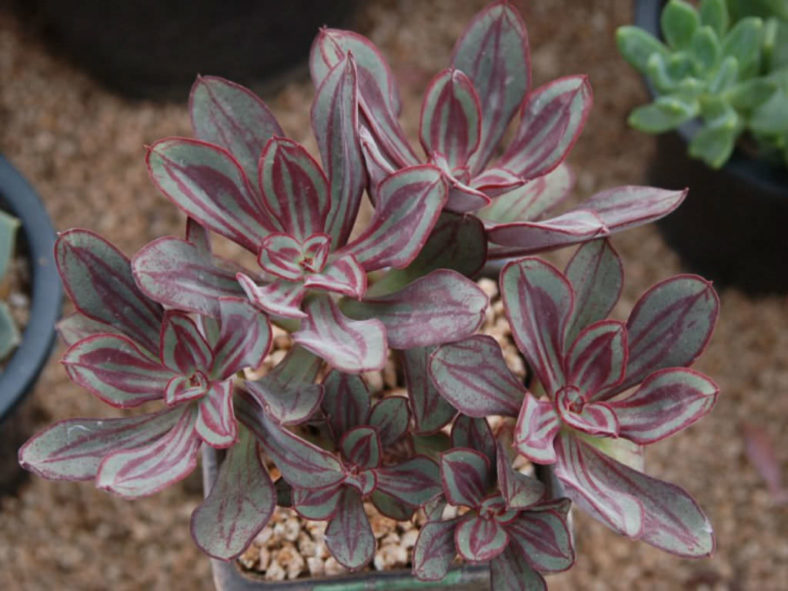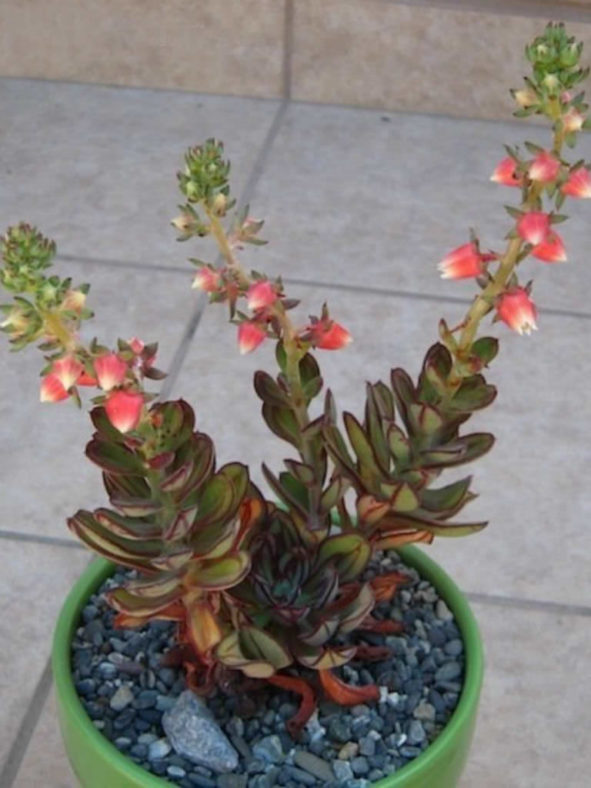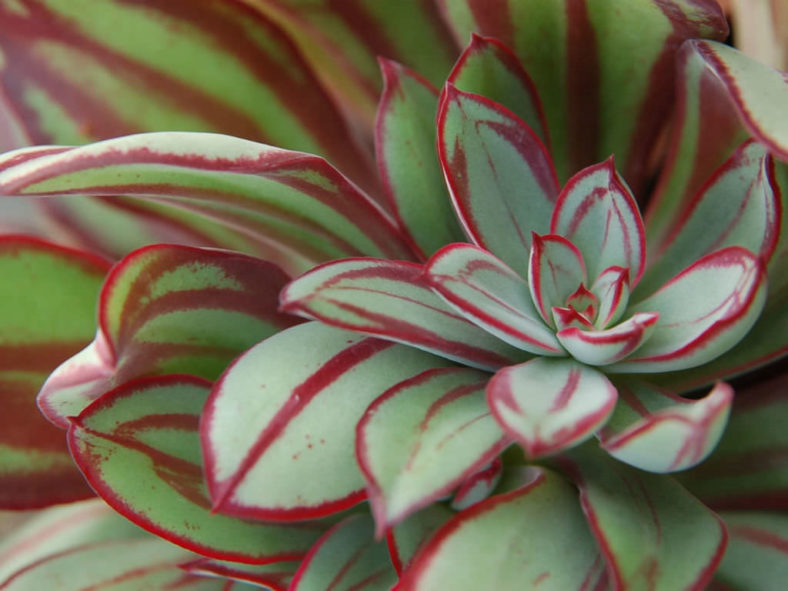Scientific Name
Echeveria nodulosa (Baker) Ed. Otto
Common Name(s)
Painted Echeveria
Synonym(s)
Cotyledon bicolor, Cotyledon nodulosa, Echeveria discolor, Echeveria misteca
Scientific Classification
Family: Crassulaceae
Subfamily: Sempervivoideae
Tribe: Sedeae
Genus: Echeveria
Etymology
The specific epithet "nodulosa (nod-yoo-LOH-suh)" means "having small nodes or knots" and refers to the texture of the stems.
Origin
Echeveria nodulosa is native to Mexico (northern Oaxaca and southern Puebla).
Description
Echeveria nodulosa is an attractive, much-branched succulent with erect or sprawling stems that bear rosettes of dull apple-green leaves marked with purplish-red on both surfaces and along the margins. The stems can grow up to 8 inches (20 cm) long. The leaves are slightly concave above, keeled below, and pointed, measuring up to 2 inches (5 cm) long and 0.6 inches (1.5 cm) wide. They are rarely entirely green.
The flowers are bell-shaped, rose-red, and yellowish along the margins and tips of the petals. They appear in erect, unbranched inflorescences that can grow up to 12 inches (30 cm) tall in spring or summer.

How to Grow and Care for Echeveria nodulosa
Soil: Echeverias need a potting soil mix that drains quickly. Many growers will create their own mix. However, commercial cactus and succulent potting soil will work fine.
Light: These succulents prefer full sun to partial shade. However, avoid drastic sunlight changes and full afternoon sun, especially in summer. When your succulents are inside during the winter, put them near the brightest window in your home.
Hardiness: Echeveria nodulosa can withstand temperatures as low as 25 to 50 °F (-3.9 to 10 °C), USDA hardiness zones 9b to 11b.
Watering: When and how to water is crucial to Echeveria care. They do not like to be kept too wet, but they also do not like to be kept too dry. Therefore, the "soak and dry" method is the preferred schedule for watering Echeverias.
Fertilizing: Echeverias grow well without fertilizer but may benefit from the extra nutrients.
Repotting: Repot when needed in the spring or early summer.
Propagation: Echeverias are one of the easiest succulents to propagate. They are usually propagated from offsets or leaves but can also be grown from stem cuttings and seeds.
Learn more at How to Grow and Care for Echeveria.
Toxicity of Echeveria nodulosa
Echeverias are safe around pets and humans, although it is not advisable to eat them.
Cultivars of Echeveria nodulosa
Links
- Back to genus Echeveria
- Succupedia: Browse succulents by Scientific Name, Common Name, Genus, Family, USDA Hardiness Zone, Origin, or cacti by Genus
Photo Gallery
Click on a photo to see a larger version.


